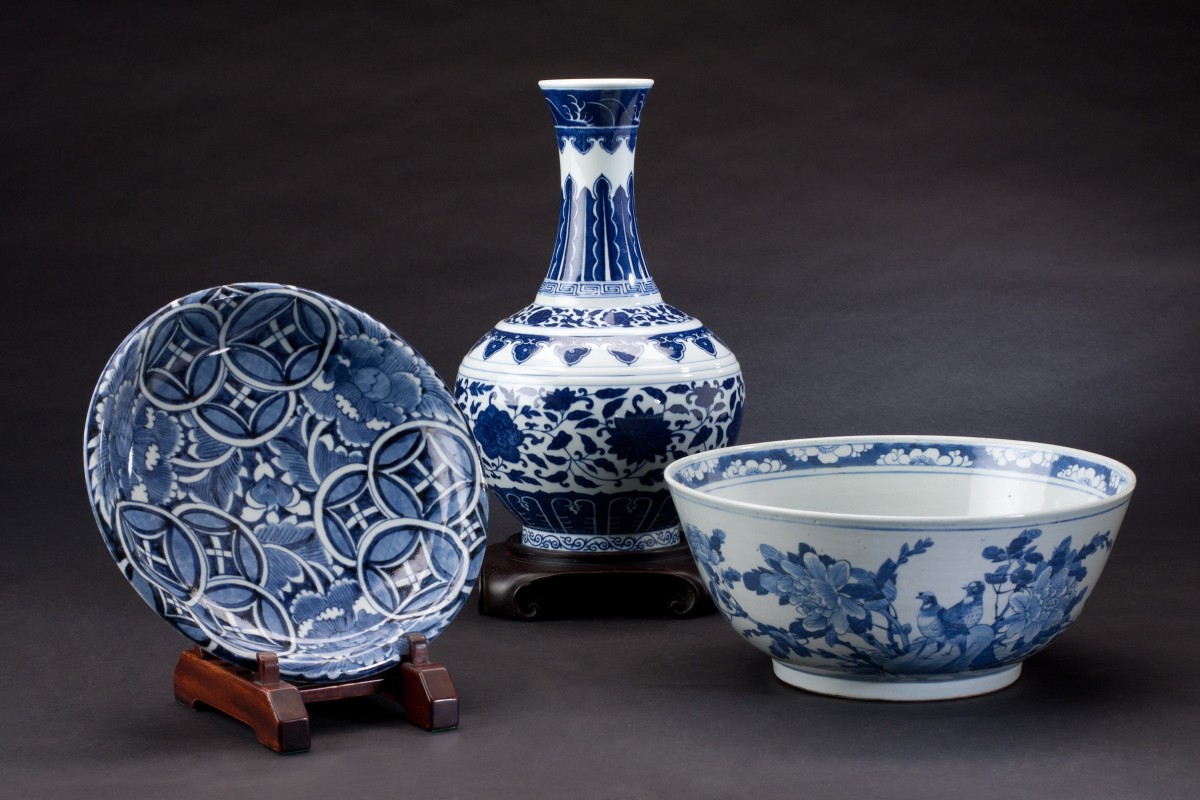
Ming Dynasty bowl found at yard sale sells for more than HK$5 million
- A man bought the bowl for HK$271, but realised the antique was worth much more money
- The piece was made in China in the early 1400s during the reign of the Yongle Emperor and is one of only seven known in the world
 Who knows? Maybe that old bowl of your grandmother's is worth a LOT of money.
Who knows? Maybe that old bowl of your grandmother's is worth a LOT of money.An exceptionally rare 15th century porcelain bowl made in China that somehow turned up at a yard sale in the US state of Connecticut and sold for HK$271 was auctioned off Wednesday for nearly HK$5,607,665.
The small white bowl adorned with cobalt blue paintings of flowers and other designs — one of only seven such bowls known to exist in the world — was among a variety of Chinese works of art sold by Sotheby’s - a company that auctions off rare items and antiques - as part of its Asia Week events. The names of the seller and buyer were not disclosed.
Has China actually beaten extreme poverty?
An antiques enthusiast came across the Ming Dynasty-era piece and thought it could be something special when browsing a yard sale last year, according to Sotheby’s. The buyer later emailed information and photos to Sotheby’s asking for an evaluation.
“Today’s result for this exceptionally rare floral bowl, dating to the 15th century, epitomises the incredible, once in a lifetime discovery stories that we dream about as specialists in the Chinese Art field,“ Angela McAteer, head of Sotheby’s Chinese Works of Art Department, said in a statement.
The Chinese comedian making waves with a sentimental film
Sotheby’s confirmed it was from the 1400s when they were able to look at it in person — there are no scientific tests, only the trained eyes and hands of specialists. The bowl was very smooth to the touch, its glaze was silky and the colour and designs are distinctive of the period.
The bowl dates back to the early 1400s during the reign of the Yongle Emperor, the third ruler of the Ming Dynasty, and was made for the Yongle court. The Yongle court was known to have ushered in a new style to the porcelain kilns in the city of Jingdezhen.
Are these new mahjong sets just a game or gentrification?
The bowl was made in the shape of a lotus bud or chicken heart. Inside, it is decorated with a medallion at the bottom and a quatrefoil motif surrounded by flowers. The outside includes four blossoms of lotus, peony, chrysanthemum and pomegranate flower. There are also intricate patterns at the top of both the outside and inside.
McAteer said only six other such bowls are known to exist, and most of them are in museums. No others are in the United States. There are two at the National Palace Museum in Taipei, Taiwan, two at museums in London and one in the National Museum of Iran in Tehran, according to Sotheby’s.
How the bowl ended up at a Connecticut yard sale remains a mystery. McAteer said it’s possible it was passed down through generations of the same family who did not know how unique it was.